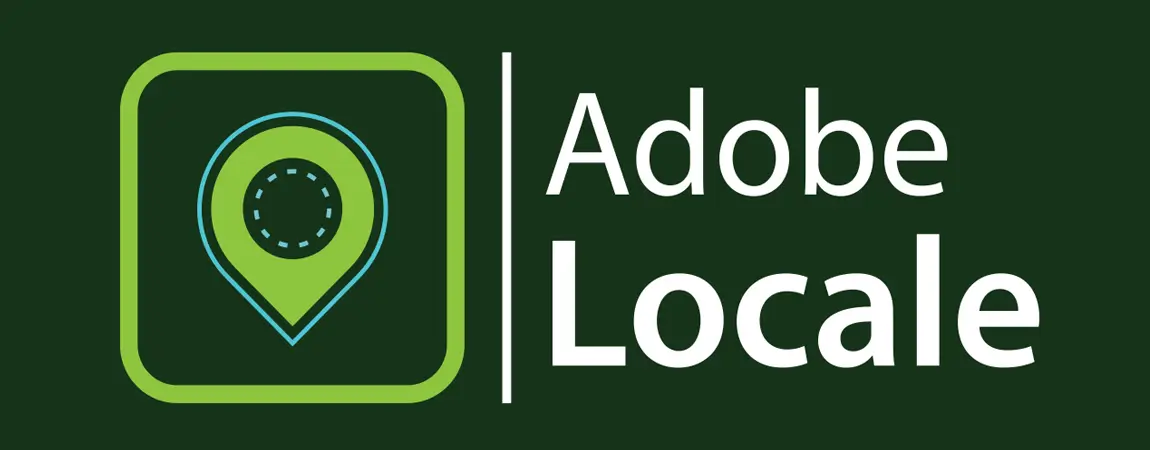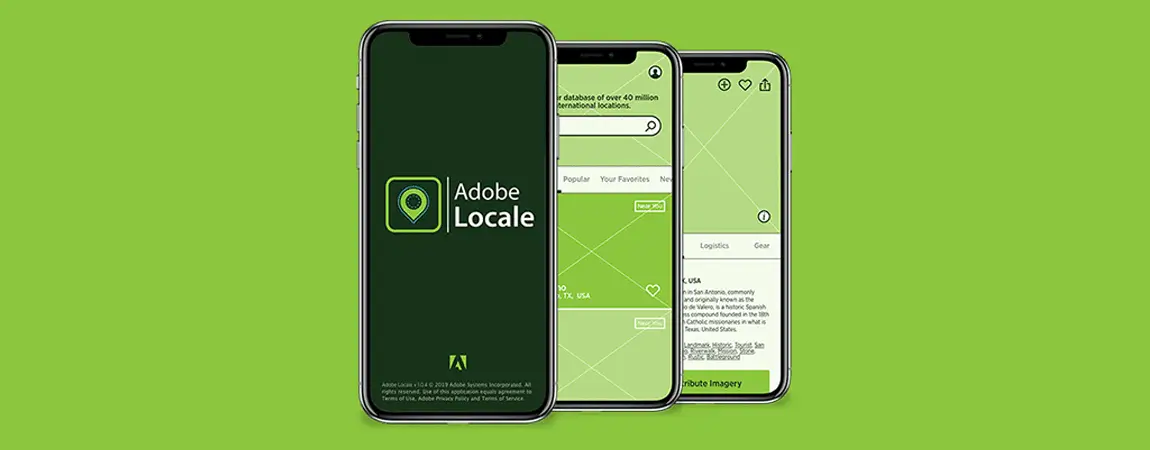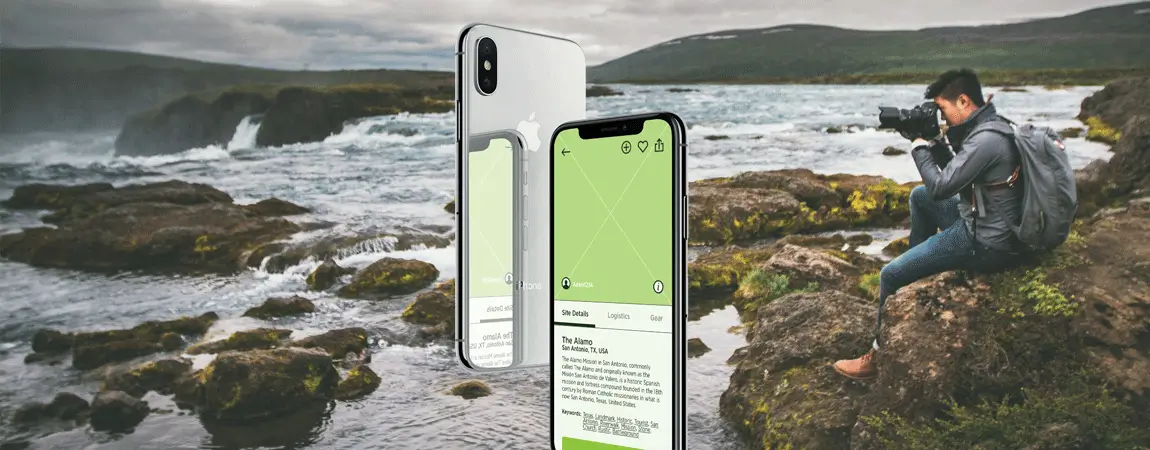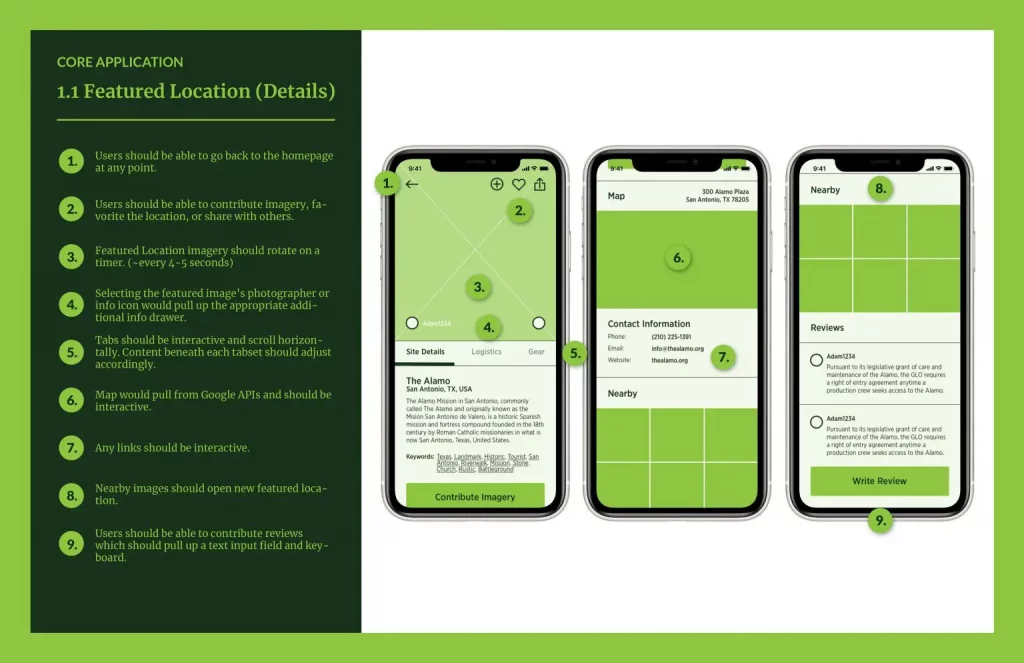


Adobe Locale
A location-scouting tool for photographers and filmmakers. I led the UX process to design an intuitive prototype for Adobe’s mobile suite, focused on seamless search, sharing, and discovery.
Overview:
Project: Adobe Locale (Concept App)
Role: UX Designer
Tools: Sketch, InVision Studio, InVision Inspect, Adobe Creative Suite
Prototype: High-fidelity interactive prototype (200+ screens)
Platform: iOS and Android mobile app
Timeline: 2 weeks
The Challenge:
Adobe Locale is a conceptual expansion of Adobe’s Creative Cloud mobile suite. Designed for both hobbyists and professionals, the app helps photographers and filmmakers scout shoot locations based on keywords, map searches, or community-contributed content.
The design problem: How might we create a smooth, intuitive location-scouting experience that integrates into Adobe’s existing mobile ecosystem?
My goal was to build a prototype that could demonstrate core interactions and user flows while remaining grounded in Adobe’s design language.
My Process:
I used a four-phase approach to bring this concept to life:

Created a detailed project brief outlining goals, users, features, and platform support
Conducted competitive analysis of location-scouting tools (e.g., ShotHotspot, Pixeo)
Developed a primary persona representing our target user: a semi-pro travel photographer

Sketched early screen concepts to explore key flows
Created a comprehensive screenflow diagram to map out user paths
Built annotated wireframes to visualize layout, interactions, and behaviors

Designed a high-fidelity, interactive prototype in Sketch + InVision Studio
Simulated interactions like searching, bookmarking, and sharing locations
Used InVision Inspect for developer-ready handoff with embedded specs and assets

Ran multiple rounds of critique with design peers
Identified gaps, improved navigation, and simplified screen transitions
Focused revisions on usability, scalability, and design consistency
Results:
The final prototype included over 200 screens and demonstrated core features and flows. It could now be used for:
Internal product pitches
Stakeholder demos
Development support
Usability testing
While it’s not a functioning app, Adobe Locale provides a realistic vision of how a community-driven location-scouting tool could live within the Adobe ecosystem.

Lessons Learned:

With over 200 screens, I had to make tough decisions about depth vs. scope. In some cases, I recreated Adobe Web features natively for consistency. Prioritizing realism helped reduce potential development ambiguity.

This project pushed me to explore new platforms like Axure, Adobe XD, Flinto, and Proto.io. While InVision won out, each tool added to my design vocabulary and decision-making process.

Peer reviews led to meaningful changes and stronger outcomes. I refined how I give and receive feedback—focusing on empathy, clarity, and shared goals.
Conclusion:
Adobe Locale is more than just a concept—it’s a creative tool designed to inspire. Through thoughtful UX and robust interaction design, it offers creators a way to discover the world around them—and share it with others.
––––––––––